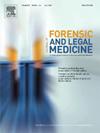“我不能呼吸了”——对倾向于约束死亡的民事诉讼案件的研究
IF 1.2
4区 医学
Q3 MEDICINE, LEGAL
引用次数: 0
摘要
导言:由于执法人员的不当限制行为与羁押期间的死亡以及随后的民事诉讼有关,因此受到了严格的审查。人们对这些死亡事件的真实发生率、风险因素和生理机制仍然知之甚少。本研究旨在通过分析法律案件记录,评估与约束相关的易发死亡事件并确定相关风险因素。方法本回顾性研究检查了美国国家法律数据库(LexisNexis)中 2010 年至 2019 年的法律记录。使用 MeSH 术语 "俯卧约束心脏骤停 "确定案例。提取的数据包括人口统计学变量和案件特定变量,如年龄、性别、体重指数(BMI)、俯卧约束持续时间、使用额外体重、种族、使用传导电武器(CEW)、是否存在人体摄影机镜头、兴奋性谵妄报告、药物中毒、和解金额以及 "我无法呼吸 "的记录陈述。大多数受试者(98%)为男性,平均死亡年龄为 37 岁。在有数据可查的病例中,38%为非裔美国人,33%患有肥胖症,64%涉及使用娱乐性兴奋剂。58%的病例是在俯卧 1 到 5 分钟后死亡的。80%的病例使用了额外的体重,39%的病例使用了CEW。据报告,31%的病例出现了兴奋性谵妄。超过 20% 的人被记录说 "我无法呼吸"。本研究是医学文献中报道的 229 例俯卧约束相关死亡中最大的系列病例,但真实发生率仍不确定。进一步的研究对于更好地了解发病率、风险因素和潜在的缓解策略至关重要。医学界、法医界、执法机构和政策制定者之间的合作对于准确评估这一问题的范围并采取措施减少与俯卧约束相关的死亡至关重要。本文章由计算机程序翻译,如有差异,请以英文原文为准。
“I can’t breathe” – A study of civil litigated cases on prone restraint deaths
Introduction
Prone restraint by law enforcement has come under scrutiny due to its association with in-custody deaths and subsequent civil litigation. The true incidence, risk factors, and physiological mechanisms contributing to these fatalities remain poorly understood. This study aims to assess prone restraint-related death occurrences and identify associated risk factors by analyzing legal case records.
Methods
This retrospective study examined United States legal records from the National Legal Database, LexisNexis, covering 2010 to 2019. Cases were identified using the MeSH term “prone restraint cardiac arrest.” Data extracted included demographic and case-specific variables such as age, gender, body mass index (BMI), duration of prone restraint, application of additional body weight, race, use of a conducted electrical weapon (CEW), presence of body camera footage, reports of excited delirium, drug intoxication, settlement amounts, and documented statements of “I can't breathe."
Results
A total of 229 cases met the inclusion criteria for analysis. The majority of subjects (98 %) were male, with an average age at death of 37 years. Among cases with available data, 38 % were African American, 33 % had obesity, and 64 % involved recreational stimulant drug use. In 58 % of cases, death occurred after one to 5 min of prone restraint. Additional body weight was applied in 80 % of cases, while CEWs were used in 39 %. Excited delirium was reported in 31 % of cases. More than 20 % of individuals were recorded saying, “I can't breathe.” The average reported settlement in resolved cases was $2.5 million.
Conclusion
This study represents the largest case series of 229 reported prone restraint-related deaths to be reported in the medical literature, yet the true incidence remains uncertain. Further research is essential to better understand the prevalence, contributing risk factors, and potential mitigation strategies. Collaboration among the medical and forensic communities, law enforcement agencies, and policymakers is critical to accurately assess the scope of this issue and implement measures to reduce fatalities associated with prone restraint.
求助全文
通过发布文献求助,成功后即可免费获取论文全文。
去求助
来源期刊

Journal of forensic and legal medicine
MEDICINE, LEGAL-
CiteScore
2.70
自引率
6.70%
发文量
106
审稿时长
57 days
期刊介绍:
The Journal of Forensic and Legal Medicine publishes topical articles on aspects of forensic and legal medicine. Specifically the Journal supports research that explores the medical principles of care and forensic assessment of individuals, whether adult or child, in contact with the judicial system. It is a fully peer-review hybrid journal with a broad international perspective.
The Journal accepts submissions of original research, review articles, and pertinent case studies, editorials, and commentaries in relevant areas of Forensic and Legal Medicine, Context of Practice, and Education and Training.
The Journal adheres to strict publication ethical guidelines, and actively supports a culture of inclusive and representative publication.
 求助内容:
求助内容: 应助结果提醒方式:
应助结果提醒方式:


